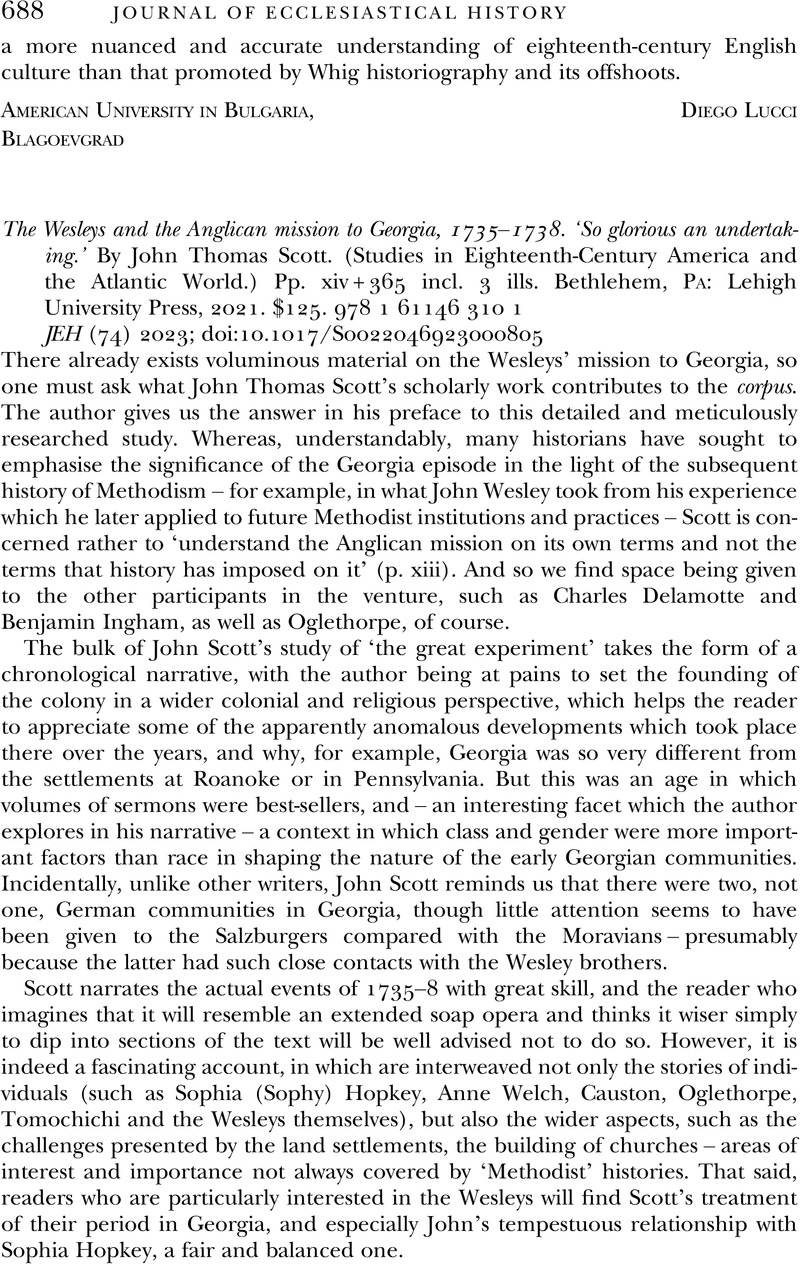No CrossRef data available.
Article contents
The Wesleys and the Anglican mission to Georgia, 1735–1738. ‘So glorious an undertaking.’ By John Thomas Scott. (Studies in Eighteenth-Century America and the Atlantic World.) Pp. xiv + 365 incl. 3 ills. Bethlehem, Pa: Lehigh University Press, 2021. $125. 978 1 61146 310 1
Review products
The Wesleys and the Anglican mission to Georgia, 1735–1738. ‘So glorious an undertaking.’ By John Thomas Scott. (Studies in Eighteenth-Century America and the Atlantic World.) Pp. xiv + 365 incl. 3 ills. Bethlehem, Pa: Lehigh University Press, 2021. $125. 978 1 61146 310 1
Published online by Cambridge University Press: 05 July 2023
Abstract
An abstract is not available for this content so a preview has been provided. Please use the Get access link above for information on how to access this content.

- Type
- Reviews
- Information
- Copyright
- Copyright © Cambridge University Press 2023



